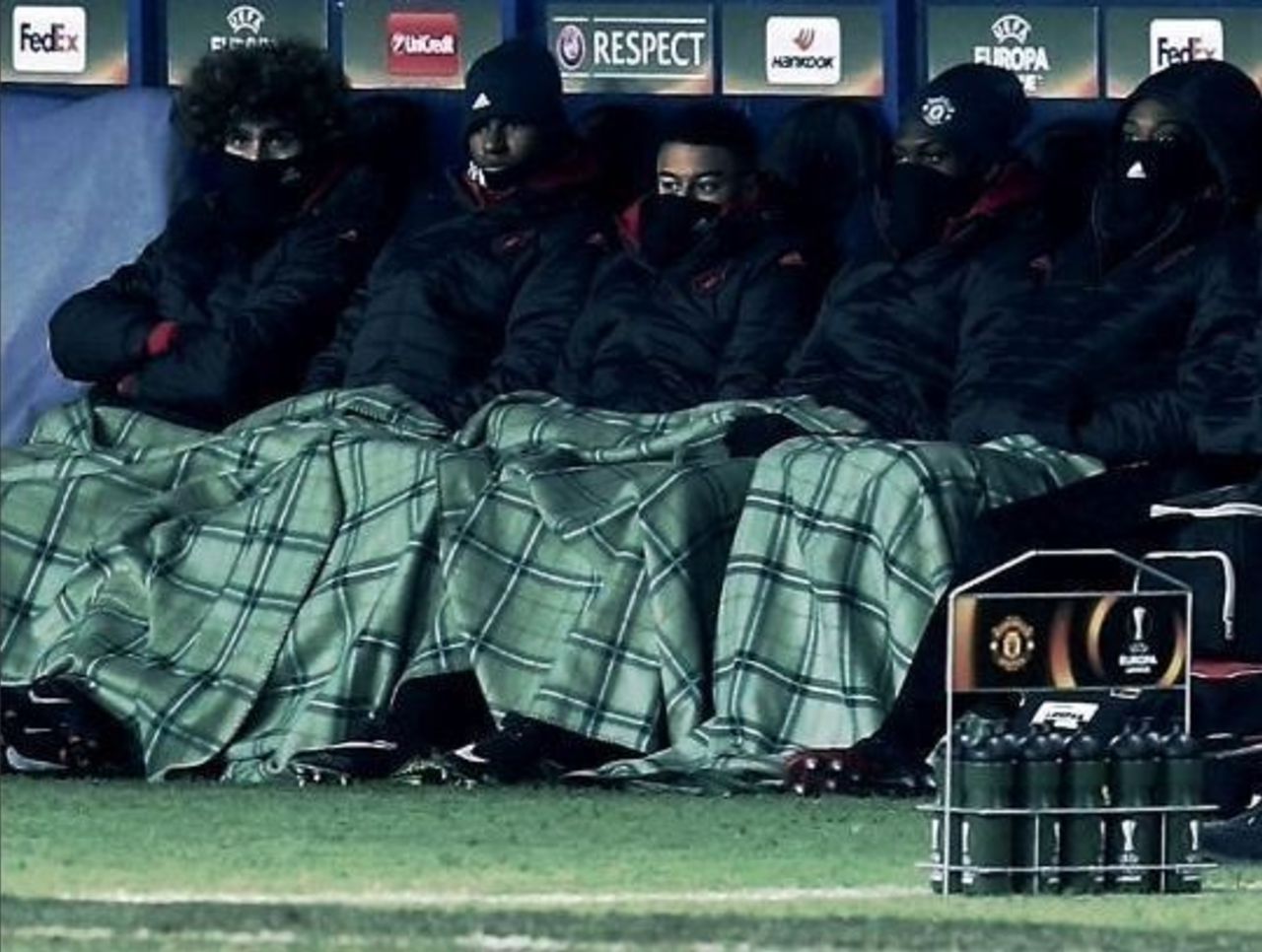Marquee matchup: Mourinho's retro tactics for Spurs' visit
While Manchester United's ranks were clanking its studs across Zorya Luhansk's icy eastern Ukrainian pitch on Thursday, the substitutes snuggled up under checked blankets like dear old ladies nibbling flapjack in front of Sunday's installment of wholesome series "Heartbeat."
But perhaps the entertainment was just another repeat, as they caught a glimpse of the pages from Jose Mourinho's tactical notepad. The early days have used drawings from a bygone era, and now he's ditched his steadfast 4-2-3-1 for something harking back to the middle of the previous decade. After a gargantuan summer spend, goals have been lacking.

Sunday's visitor, Tottenham Hotspur, meanwhile, has dealt with spates of injuries, settling pains from the likes of Vincent Janssen, and Harry Kane's annual August slump. Things have brightened since Spurs have been able to return to their well-used methods, albeit when they're already seven points adrift of leader Chelsea in fifth.
Following starts to the season that have shown signs of improvement but have ultimately fallen below expectations, United and Spurs meet in a clash that could dictate how the rest of the season plays out.
Injuries and suspensions
United fans took a collective gasp of breath when Eric Bailly landed awkwardly in Ukraine, but he's available. Luke Shaw and Chris Smalling stay in the treatment room.

Toby Alderweireld was introduced off the bench in the midweek 3-1 beating of CSKA Moscow and came through unscathed. He'll be a welcome addition to the lineup. Erik Lamela and Janssen are suffering from respective hip and ankle issues.
Projected lineups
Manchester United starting XI: De Gea; Valencia, Bailly, Rojo, Darmian; Carrick; Mkhitaryan, Herrera, Pogba, Martial; Ibrahimovic
Tottenham starting XI: Lloris; Walker, Alderweireld, Vertonghen, Rose; Wanyama, Dembele; Eriksen, Alli, Son; Kane
What to watch
United has played with a more predatory nature of late when leading, rather than slowing down the match with sideways passes and a distinct lack of penetrative forward strides akin to the Louis van Gaal era (although he sometimes tended to implement this approach from the first whistle). Mourinho has added more impetus to double a one-goal advantage.
At Everton last weekend, the Red Devils were in the ascendancy, intently yet fruitlessly trying to breach Maarten Stekelenburg for a second time between the sticks - well, until Marouane Fellaini was introduced.

The mammalian-haired midfielder epitomises what's been wrong with this United side. Yes, he was guilty for clumsily upending Idrissa Gueye for a late penalty on Merseyside, but his greatest hindrance over the season is how he single-handedly detached the deep-lying midfielders from those in more attacking positions, and stymied Paul Pogba's freedom beside him.
That's why Fellaini will be played sparingly as the campaign wears on. Mourinho has addressed the Pogba conundrum by jettisoning Fellaini and regurgitating the Claude Makelele role from his Chelsea days between 2004-2006, when he got the better of the stubborn 4-4-2 popular with his Premier League rivals at the time.
Chelsea strictly played a 4-3-3, but it has similarities to the 4-1-4-1 shape that United now adopts regularly in matches.
"Look, if I have a triangle in midfield - Claude Makelele behind and two others just in front - I will always have an advantage against a pure 4-4-2 where the central midfielders are side by side," Mourinho explained in those days, as quoted by World Soccer Talk. "That's because I will always have an extra man. It starts with Makelele, who is between the lines."

This time Mourinho's Makelele is Michael Carrick, a supremely intelligent reader of the game and one who seldom makes an incorrect decision. His deployment "between the lines" gives license to Pogba and the excellent Ander Herrera to busy themselves up ahead. The only true difference between Mourinho's United and his first Chelsea regime, then, is that the wingers drop deeper to form a flat midfield, rather than closely bordering the frontman.
But that system still poses two deficiencies.
Firstly, if you take August and September out of the equation, only Hull City, Everton, and Southampton have scored less goals than United's at-times bloated attack. Against fit-again Alderweireld and Jan Vertonghen - the Premier League's best defensive pairing - that's a serious problem.
Additionally, Tottenham's chief attacking threat comes from a narrow midfield and attack - Heung-Min Son and Christian Eriksen lurking either side of the D, with Dele Alli operating behind Kane - being fed by the overlapping full-backs in a 4-2-3-1, not the 4-4-2 Mourinho previously sought to exploit. If United's likely right-back Antonio Valencia and auxiliary left-back Matteo Darmian are drawn to either Eriksen or Son, the burgeoning runs of Kyle Walker and Danny Rose will dominate the areas vacated.

This is where the match can be won or lost. Can Pogba and Herrera sink either side of Carrick in time to stifle Son and Eriksen? Can the widemen - probably Henrikh Mkhitaryan and Anthony Martial - contribute defensively on Walker and Rose when their full-backs have become preoccupied with alternative white shirts?
In a spell where English football has shirked its stubborn traditions with back threes and positional fluidity - a la Antonio Conte and Pep Guardiola - these systems do hark back to an earlier time, but that doesn't prevent this tie from shaking off the dust and cobwebs to become a frantic match of chess.